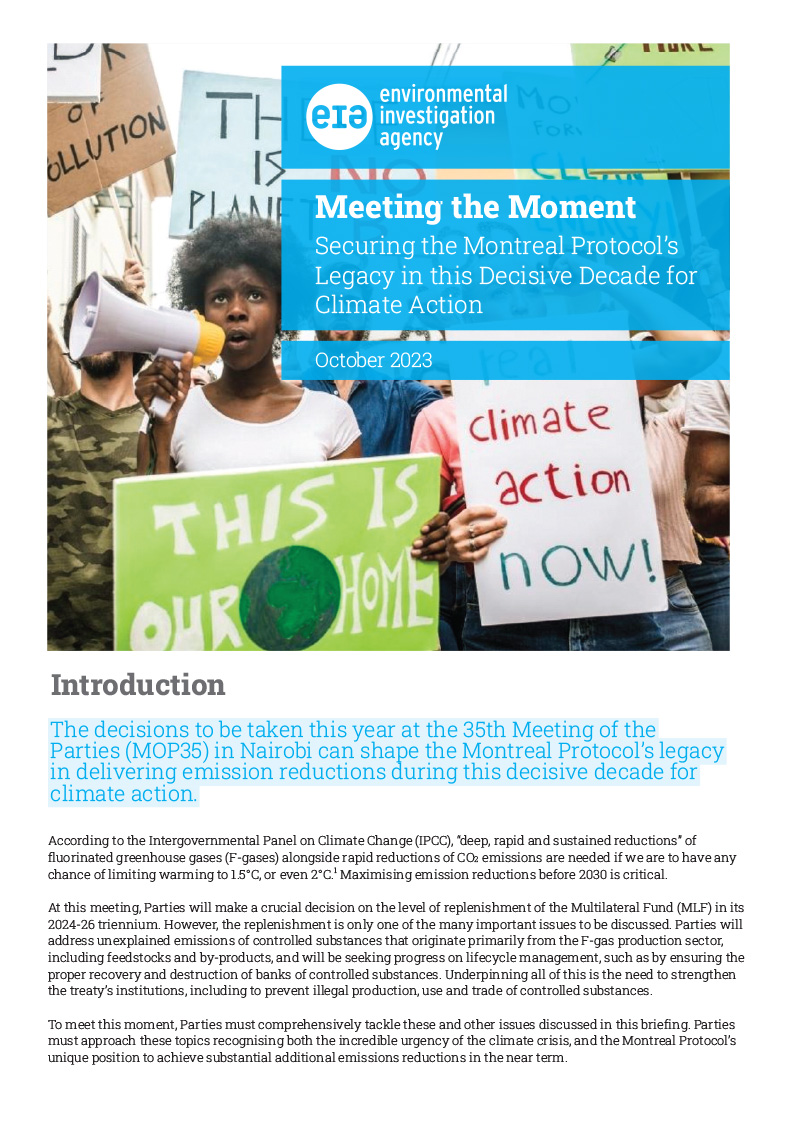Meeting the Moment: Securing the Montreal Protocol’s Legacy in this Decisive Decade for Climate Action
From 23rd to 27th October, governments, NGOs and other stakeholders from around the world will be attending the 35th Meeting of the Parties to the Montreal Protocol (MOP35) in Nairobi. The Montreal Protocol on Substances that Deplete the Ozone Layer is widely hailed as the most successful global environmental agreement, having phased out more than 99% of the production of ozone depleting substances (ODS), setting the ozone layer on the path to recovery. The 2016 Kigali Agreement, which extended the Montreal Protocol’s remit to climate-damaging hydrofluorocarbons (HFCs) will avoid up to a half a degree of warming by the end of the century.
EIA is urging significant investment in the ozone treaty, which can secure substantial additional greenhouse gas emission reductions in the near future. A new briefing “Meeting the Moment: Securing the Montreal Protocol’s Legacy in this Decisive Decade for Climate Action” analyses and provides recommendations on a variety of issues on the agenda for MOP35, including the replenishment of the Protocol’s financial mechanism, emissions from fluorochemical production, byproduct HFC-23 emissions and the steps needed to strengthen the Montreal Protocol, including for combatting illegal trade in ODS and HFCs.


